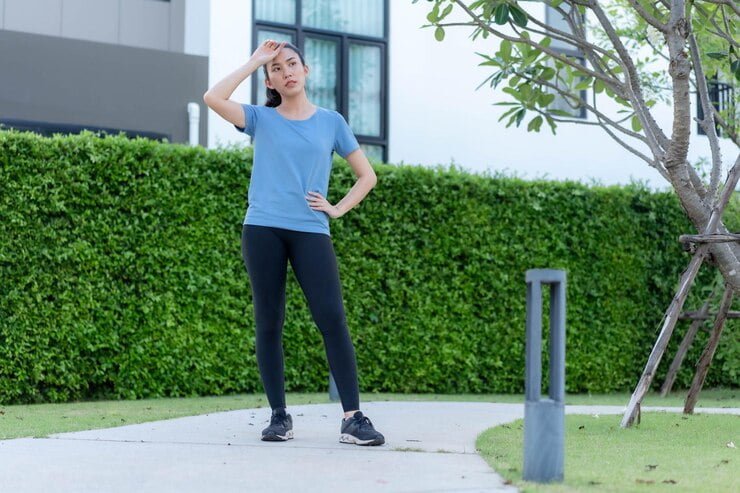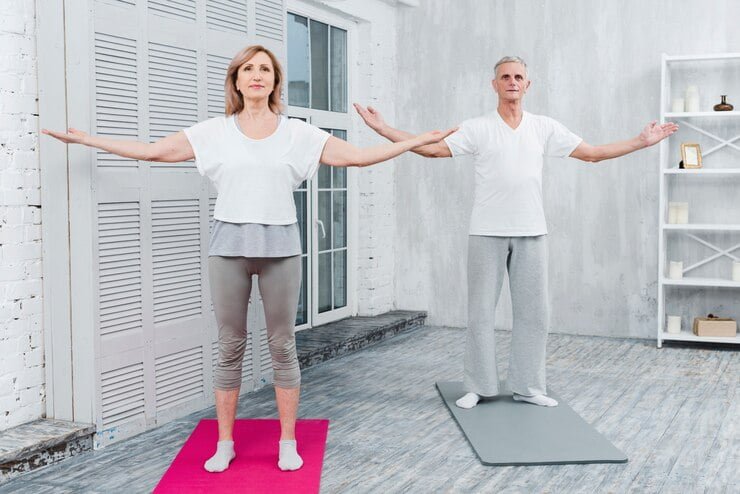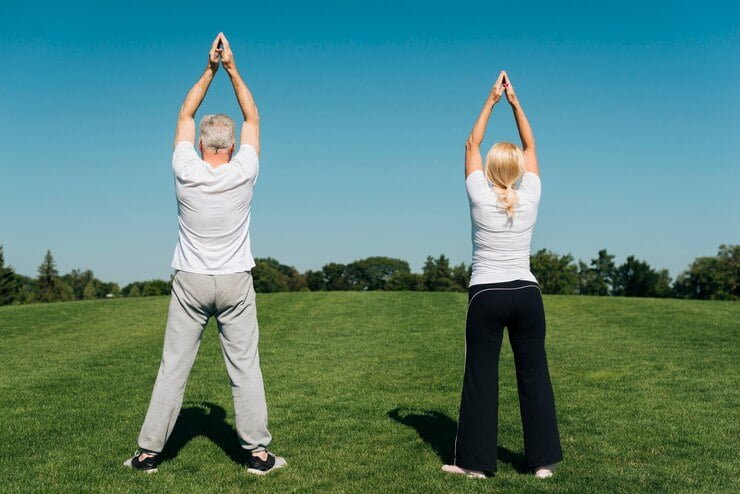
Keeping active in old age is essential to maintaining health, increasing mobility and ensuring independency. There are many types of exercises but standing exercises offer unique advantages for seniors. They focus on enhancing balance, building strength, and boosting flexibility that are all vital for an active life with vibrancy. Here is a comprehensive guide to the best standing exercises tailored for seniors which include FAQs as well as a conclusion.
Exercises to improve balance
Heel to toe walk
How to do it:
Stand with your feet together. Take a step forward with your right foot so that your heel touches down directly in front of your left toes. Repeat this step; then do the same thing with your other leg while you walk across the room.
Benefits:
This exercise improves balance and coordination thus reducing the risk of falling.
Single Leg stand
How to do it:
Stand behind a sturdy chair holding onto the back for support. Lift one foot off ground balancing on the other leg comfortably as long as possible before repeating on different side.
Benefits:
It improves balance and also strengthens muscles around ankle and knee areas.
Side leg raises
How to do it:
Stand next to a chair for support. Lift one leg out sideways without leaning toward this leg as much as you can manage before lowering it back down then repeat using opposite side.
Benefits:
It upgrades equilibrium while powering up hip’s and thigh’s muscles.
Muscle Strengthening Exercises

Chair squats
How to Do It:
Stand in front of a chair with feet shoulder-width apart about 12 inches from its edge sitting position. Squat till thighs are parallel or just above seat level then rise back up again.
Benefits:
Strong legs and buttocks which are necessary when getting up from sitting positions are created through this exercise.
5.Calf raises:
How to Do It:
Place hands on a stable object like wall or back of chair for balance and lift heels off floor onto toes then lower them down again.
Benefits:
Strengthening calf muscles and making ankles stable are some of the results derived from this exercise.
Wall push-ups
How to Do It:
Stand facing a wall about an arm’s length away. Put your hands on the wall at shoulder height and shoulder width apart. Bend your elbows to bring your chest close to the wall and press back up straightening them again.
Benefits:
Stronger arms, chest, and shoulders.
Flexibility Exercises

Standing quadriceps stretch
How to do it:
Stand with just one leg beneath you while you bring the foot of opposite leg towards buttocks in order to grasp ankle while feeling stretch in front thigh area; if necessary use a chair for assisting balance.
Benefits:
causes flexibility in quads leading to better mobility.
8.Standing hamstring stretch
How to Do It:
Keep back straight as you place one foot on low bench or stair step so that both legs are kept straight before bending forward hips folded at waist level until a mild pull is felt behind standing leg’s thighs.
Benefits:
Reduces hamstring stiffness as well as lower back pain too.
9.Shoulder Rolls
How to Do It:
Roll your shoulders forward gently, then backwards in circles keeping body upright
Benefits:
Reduces tension in the neck region enhancing upper body flexibility.

Frequently Asked Questions
How often should these exercises be performed by seniors?
The health professionals’ recommendation is to reach 150 minutes of moderate-intensity exercise each week as a minimum goal. You can subdivide this into 30 minutes per day for five days.
Are these exercises good for beginners too?
Yes, they are! In the beginning, go through fewer repetitions or shorter periods before increasing them gradually.
What precautions need to be taken by seniors before embarking on these exercises?
Always talk to your doctor before starting any new exercise routine, particularly if you have any conditions that already exist like what you eat or your weight gain and loss routine etc., which may impact how you exercise. This includes wearing proper shoes, staying hydrated and exercising in a safe environment.
Conclusion
Regularly doing standing exercises has been shown to greatly improve senior citizens’ quality of life as well as longevity which can lead directly back toward better health outcomes even more than just being healthy on its own will help achieve both goals together – not only does it improve general wellbeing but also enhance self-esteem and independence among individuals who do them alone versus those involved in sports like walking; running etc.; thus providing opportunity for lasting friendships among peers within similar age groups such as fitness enthusiasts while others might not be aware until they start experiencing their full effects… For example, if you want to have a good balance in your body then there are specific exercises that can be done.